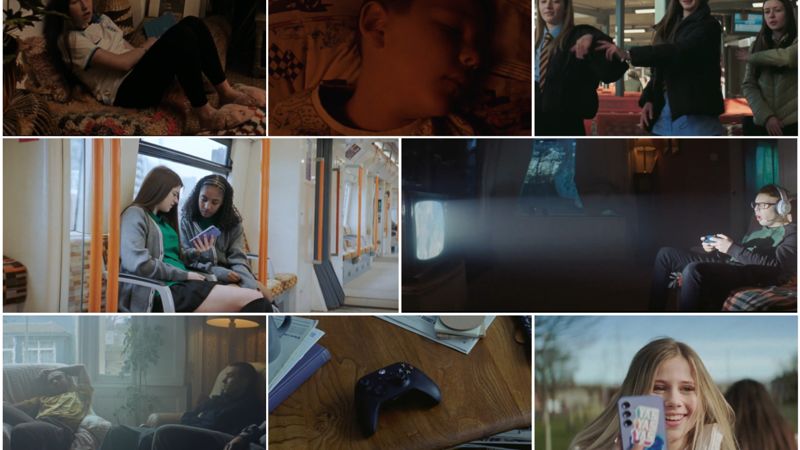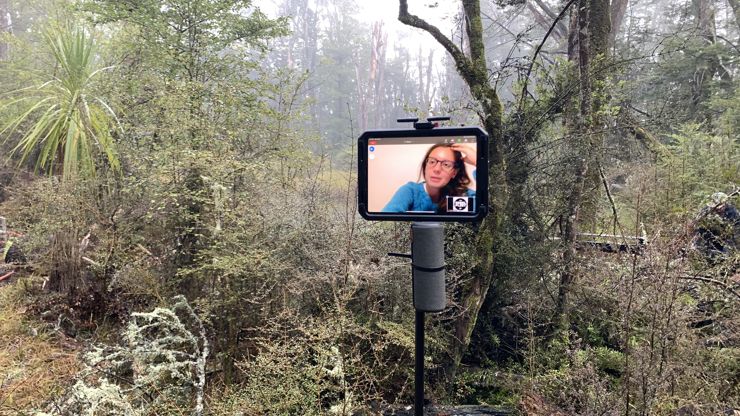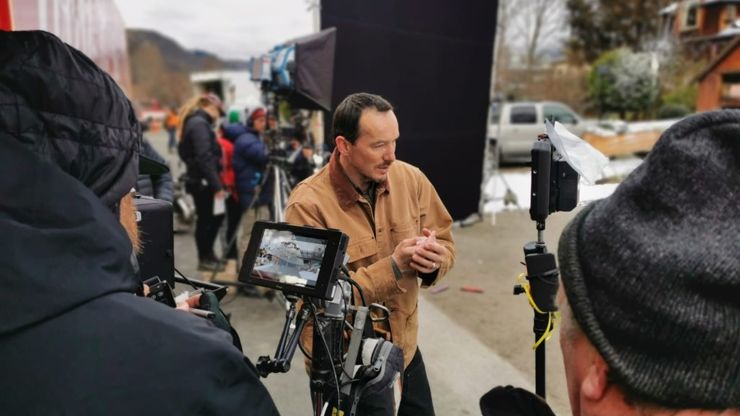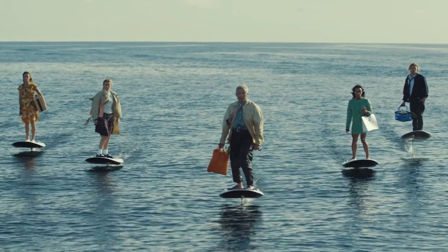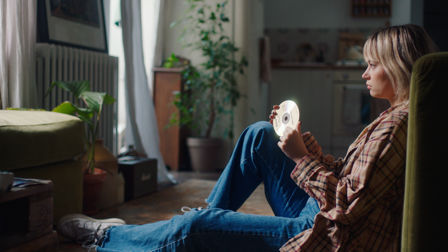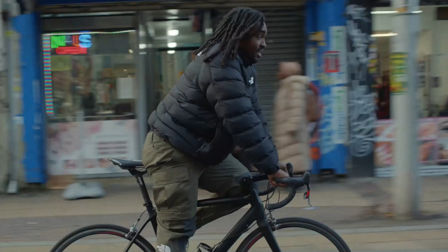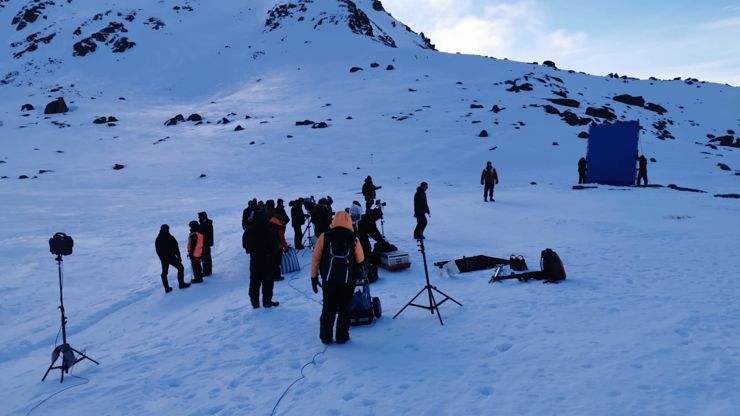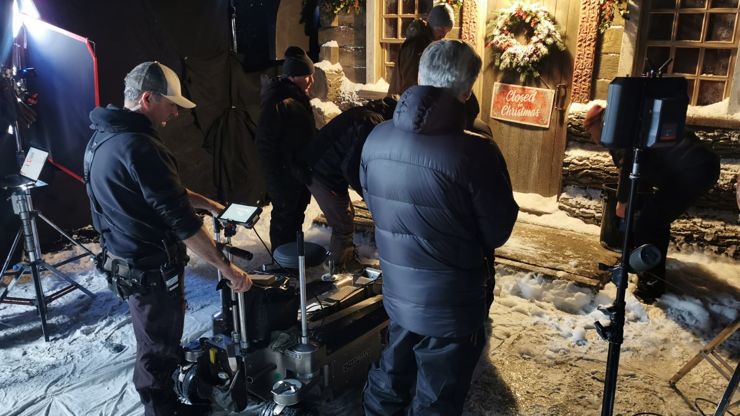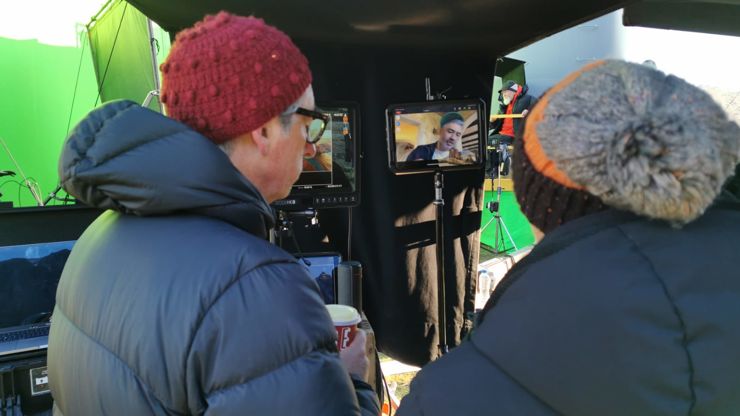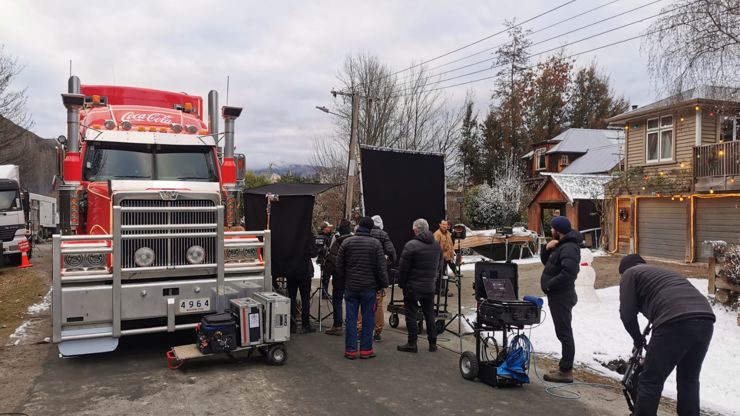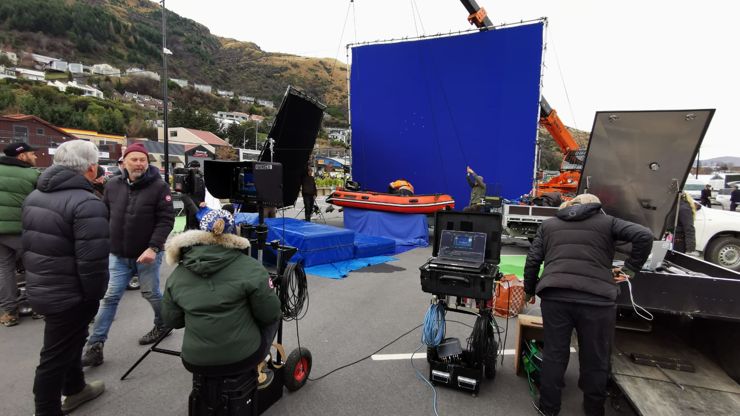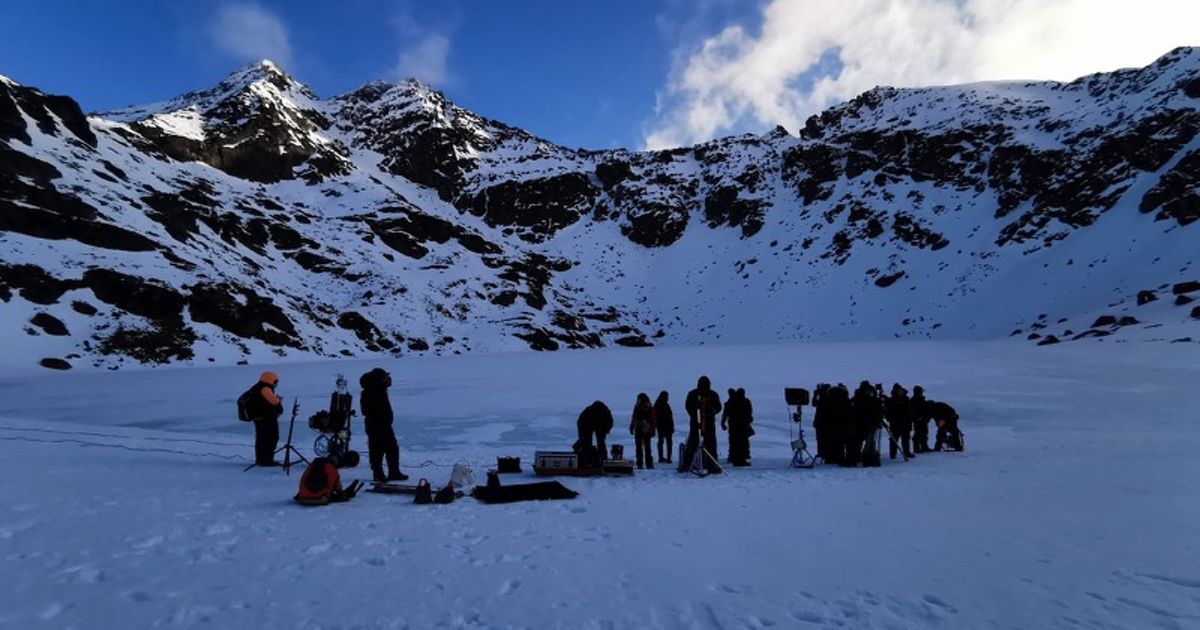Behind the scenes of Taika Waititi's Coca-Cola flavoured Christmas
With multiple teams at various locations across different time zones, the Coke Christmas shoot was a challenge, to say the least. Here, the team behind the spot reveal the pressures they faced - and overcame - to get it right.
Last week Coca-Cola launched it's Christmas campaign for 2020.
Created by Wieden+Kennedy London and directed by Jojo Rabbit, Hunt for the Wilderpeople and Thor Ragnarok director, Taika Waititi, through Hungry Man, The Letter is an epic story of a father's quest to deliver his daughter's wish for Christmas.
If the story was epic, though, the production of the two-and-a-half-minute film was that, and more. With the shoot in New Zealand, Waititi in LA and the production team and agency in London, that alone was a minefield of creative ingenuity. But, add in the 'c' word (Covid, for the avoidance of doubt), unpredictable weather and multiple time-zones and you have a huge set of creative and production challenges that were not only faced, but overcome with aplomb.
[There is] pressure from clients to deliver, pressure from audiences who want to be entertained, self-inflicted pressure not to do something that sucks.
Below, Joe De Souza, Creative Director at W+K, Sid Harrington-Odedra, VFX Lead Artist at The Mill, Hannah Stone, Producer at Hungry Man and Matt Noonan, Service Producer at Curious Film, let us in on the secrets of the shoot's success. Plus, Waititi himself enigmatically has the last - and admittedly unusual - word.
Credits
powered by
- Agency Wieden + Kennedy/London
- Production Company Hungry Man
- Director Taika Waititi
-
-
Unlock full credits and more with a Source + shots membership.
Credits
powered by
- Agency Wieden + Kennedy/London
- Production Company Hungry Man
- Director Taika Waititi
- Production Service Curious Film
- Editor Cabin Editing Company
- VFX The Mill/London
- Sound 750mph
- Music Siren/London
- Executive Creative Director Joe De Souza
- Creative Director Juan Sevilla
- Creative Ben Shaffery
- Creative Tomas Coleman
- Executive Creative Director Iain Tait
- Executive Creative Director Tony Davidson
- Producer Michelle Brough
- Executive Producer Matt Buels
- Producer Hannah Stone
- DP John Toon
- Service Producer Matt Noonan
- Executive Producer Gemma Humphries
- Shoot Supervisor Leon Woods
- VFX Supervisor Barnsley
- Colorist James Bamford
- Sound Designer Sam Ashwell
- Music Producer Sean Craigie-Atherton
- Composer Alex Baranowski

Credits
powered by
- Agency Wieden + Kennedy/London
- Production Company Hungry Man
- Director Taika Waititi
- Production Service Curious Film
- Editor Cabin Editing Company
- VFX The Mill/London
- Sound 750mph
- Music Siren/London
- Executive Creative Director Joe De Souza
- Creative Director Juan Sevilla
- Creative Ben Shaffery
- Creative Tomas Coleman
- Executive Creative Director Iain Tait
- Executive Creative Director Tony Davidson
- Producer Michelle Brough
- Executive Producer Matt Buels
- Producer Hannah Stone
- DP John Toon
- Service Producer Matt Noonan
- Executive Producer Gemma Humphries
- Shoot Supervisor Leon Woods
- VFX Supervisor Barnsley
- Colorist James Bamford
- Sound Designer Sam Ashwell
- Music Producer Sean Craigie-Atherton
- Composer Alex Baranowski
Above: The Letter.
The Coca-Cola Christmas spots are always eagerly awaited; did you feel pressure in making sure this one lived up to expectations?
JDS: For UK ad people Christmas is the Super Bowl, minus cheerleaders, big foam hands and about a trillion dollars’ worth of media spend. So, yes, there is pressure. Pressure from clients to deliver, pressure from audiences who want to be entertained, self-inflicted pressure not to do something that sucks and is hated by clients and the public. For Coca-Cola, the brief was clear; create a campaign that would bring Coca-Cola’s heritage and iconicity to life at Christmas in 2020. Make something that people would be moved by and remember.
SHO: It's always intimidating when you end up working on a Christmas campaign that you remember watching with glee back during your childhood! So, yes, the pressure was definitely there. However, since we had an A-Team of artists at The Mill working on this one, I felt quietly confident throughout.
Christmas is the Super Bowl, minus cheerleaders, big foam hands and about a trillion dollars’ worth of media spend.
Where did the inspiration for The Letter come from?
JDS: I can’t say. Not because it’s a secret, but because we never really discussed it. Tom Coleman and Ben Shaffery, the creatives, presented a simple idea about a dad who goes to the ends of the earth to give his daughter what she wants, only to discover that the one thing she wants most is for him to be with her.
They actually made a letter and handed it to me and Juan [Sevilla, CD] in the creative review to reveal the twist, and we bought the script almost immediately. When we presented the script to the senior Coke client over Zoom, we sent the letter to him by courier, so he had a real letter to open at the appropriate point in the story. He too bought the idea almost immediately.
Above: Taika Waititi directed from LA while the production team, including Hannah Stone, third image from the left, and agency were remote in London.
Was there ever a conversation about including reference or allusions to the specific challenges people have faced over 2020 with regards the pandemic?
JDS: While there were lots of pros and cons to referencing Covid challenges, we chose to create a beautiful fantasy story that would take people out of their everyday lives, for a couple of minutes at least, while highlighting something that has become very clear since March: the need for being present for people and the importance of meaningful human connection, especially at Christmas, and especially this year. That said, we were careful to avoid situations both in the story and the production that would in any way contravene Covid regulations.
Taika’s work is typically informed by a childlike perspective on the world.
Why was Taika the right director for the job and how much input did he have in the story?
JDS: Taika’s work is typically informed by a childlike perspective on the world. He introduces us to oddball characters in often quirky situations. You get carried along, seemingly oblivious to darker elements and then, suddenly - out of nowhere - you’re hit by this wave of emotion. And it is way more powerful because you didn’t expect it. Our story is a fairytale, taking its cue from a bunch of festive and redemptive tales, not least of all It’s a Wonderful Life. But the characters are real and relatable and the setting, certainly at the outset, is contemporary. We wanted to tell a compelling story that didn’t tip into cliché and stereotype or come across as saccharine. Taika got that from the start and his taste, it has to be said, is impeccable.
Above: The amazing landscapes afforded by New Zealand.
Can you tell us about the logistics of filming in New Zealand but with Taika in LA; how well did that process work?
HS: All things considered, the process worked incredibly smoothly. We were proactive with the pre-pro from day one, getting heads of departments [HoD] on board well in advance of the shoot and establishing a solid feedback routine between the team in NZ, myself in London and Taika in LA. On shoot days, we used QTake, Zoom and WhatsApp to ensure that everyone was constantly connected throughout the shoot, and enabling the crew on the ground to implement Taika's direction immediately, and me to get quick feedback and sign offs from the agency.
MN: A clear vision from Taika, great communication and detailed prep was at the core of the process. It was more like shooting a feature. We assembled key crew early so every department could share their elements with Taika and the team in London. The keys attended scouted locations at the start of pre and we went deep into the art with Production Designer Phil Ivey working closely with Taika. We streamed live images via Q-take to the USA and UK from some very remote spots, with the network team climbing mountains the day prior to shoot to establish the network links; the tech is fantastic and it enabled us to shoot so much great stuff.
On the shoot days, we were on an all-day Zoom on a monitor with the team in NZ, so we could be carried around set to chat with cast or crew whenever Taika needed.
What was the hardest part of not being physically present on the locations/sets?
SHO: There's a level of understanding and decision making that you're simply unaware of when you aren't on set for a project, which is why we're always very keen to be working on location with a director. With this project, thanks to Covid-19, it wasn't possible to send a member of the London team to be present during the shoot. However, we were lucky enough to have the next best thing to a Mill artist on set.... a former Mill artist! Leon Woods, who resides in New Zealand, where the shoot took place, was on-hand to pick up the shoot supervision and did a wonderful job.
HS: Doing night shoots from my living room during a heatwave made me pretty jealous of the guys on set at those amazing locations in New Zealand! In terms of the actual shoot, we all missed being on the ground, the atmosphere of being on set and being able to have in-person creative conversations that come up on the day, but detailed preparation was key to maintaining as many of the properties of a regular shoot day as possible.
Taika spoke with the cast ahead of the shoot and he and the HoDs were regularly communicating throughout the pre-pro to make sure everyone was clear on his creative vision. On the shoot days, we were on an all-day Zoom on a monitor with the team in NZ, so we could be carried around set to chat with cast or crew whenever Taika needed. Michelle [Brough, Agency Producer] at W+K and I were constantly speaking throughout the night to check everyone was happy with how the day (night!) was progressing, so we had plenty of measures in place to compensate for not physically being there.
Above: More images from behind the scenes on the shoot.
Christmas spots, in the UK especially, have become a creative battleground; do you think brands have had a harder time navigating that space this year due to the vastly different place most consumers are in - emotionally, physically, financially - than in a 'normal' year?
JDS: Yes, probably. From a Weiden’s perspective, we see that all brands want to be seen as relevant but they’re understandably sensitive to the fact people can switch off or turn against them if they feel they’re being ignored or patronised. And yes, a lot of people are struggling so don’t want to be reminded of how bad things are. The uncertainty is crippling. We’re all holding our breath, so to speak.
The weather and Covid were our two biggest challenges, as both were totally out of our control.
What was the most challenging part of the project?
JDS: Navigating the severe logistical implications of Covid restrictions.
SHO: It's difficult to pick out any one challenge so, instead, I'll pick out two! For the 2D team, I know they worked very, very hard on the shots featuring the Coca-Cola truck. Those plates were shot day-for-night and required an entire background replacement featuring the northern lights. It turns out that switching day for night on a truck that has lots of reflective elements is pretty tricky! Hats off to the 2D folks! For 3D, the shots that we spent the most amount of time on, by far, were the two whale breach shots. Liquid simulations are always very time consuming to recreate in VFX, so the team worked diligently to craft a simulation that could be patched into a live-action plate for the wide shot. For the close up, the plate that we received was of our hero character falling out of a dinghy onto the tarmac floor of a car park. We used his movement as reference for the animation of a digital double and then recreated the whole shot, ocean and all, fully in CG.
It turns out that switching day for night on a truck that has lots of reflective elements is pretty tricky!
HS: The weather and Covid were our two biggest challenges, as both were totally out of our control. Our original plan was to shoot across two parts of New Zealand - Auckland and Queenstown - however, Auckland went back into lockdown midway through our shoot so we had to scout new locations and divert everything at the last minute. Thankfully we had an amazing team on the ground in NZ who were able to reorganise all of the logistics. Also, an unseasonably sunny bout of weather, melting all of our snow in the days leading up to shooting the reveal of Santa's Grotto at the North Pole, was not ideal!
MN: Working across four time zones was the greatest challenge, long days for us in NZ with a constantly evolving schedule. But all-nighters for the whole team in London was an amazing effort. Massive respect to W+K and Hungry Man, with special shout out to Hannah Stone.
Above: The Coca-Cola truck proved a challenge for The Mill's 2D team.
And the most rewarding?
JDS: Having navigated the severe logistical implications of Covid.
HS: Working with Taika, Matt and the guys in NZ, and Michelle and the creative team at W+K in such a collaborative way on such an epic job was a genuine pleasure from start to finish. And seeing the finished product was even better than usual, knowing we had shot it all under such extraordinary circumstances.
MN: It’s always a privilege working with Taika, he’s incredibly inspiring and we all give our very best for him. And, as a bonus, we got to shoot in some of the most beautiful places in NZ.
What do you hope Santa Claus brings for you this year?
JDS: A vaccine, please.
SHO: Dinner. With some loved ones. Around the same table!
HS: An end to hearing/ reading/ saying the phrase ‘unprecedented times’.
MN: I’d be remiss if I wasn’t hoping for a vaccine, but in the meantime, I’d love to shoot more epic remote films with great people, awesome creative and legendary brands.
TW: A human leg. Or a masseuse and osteopath.
)
